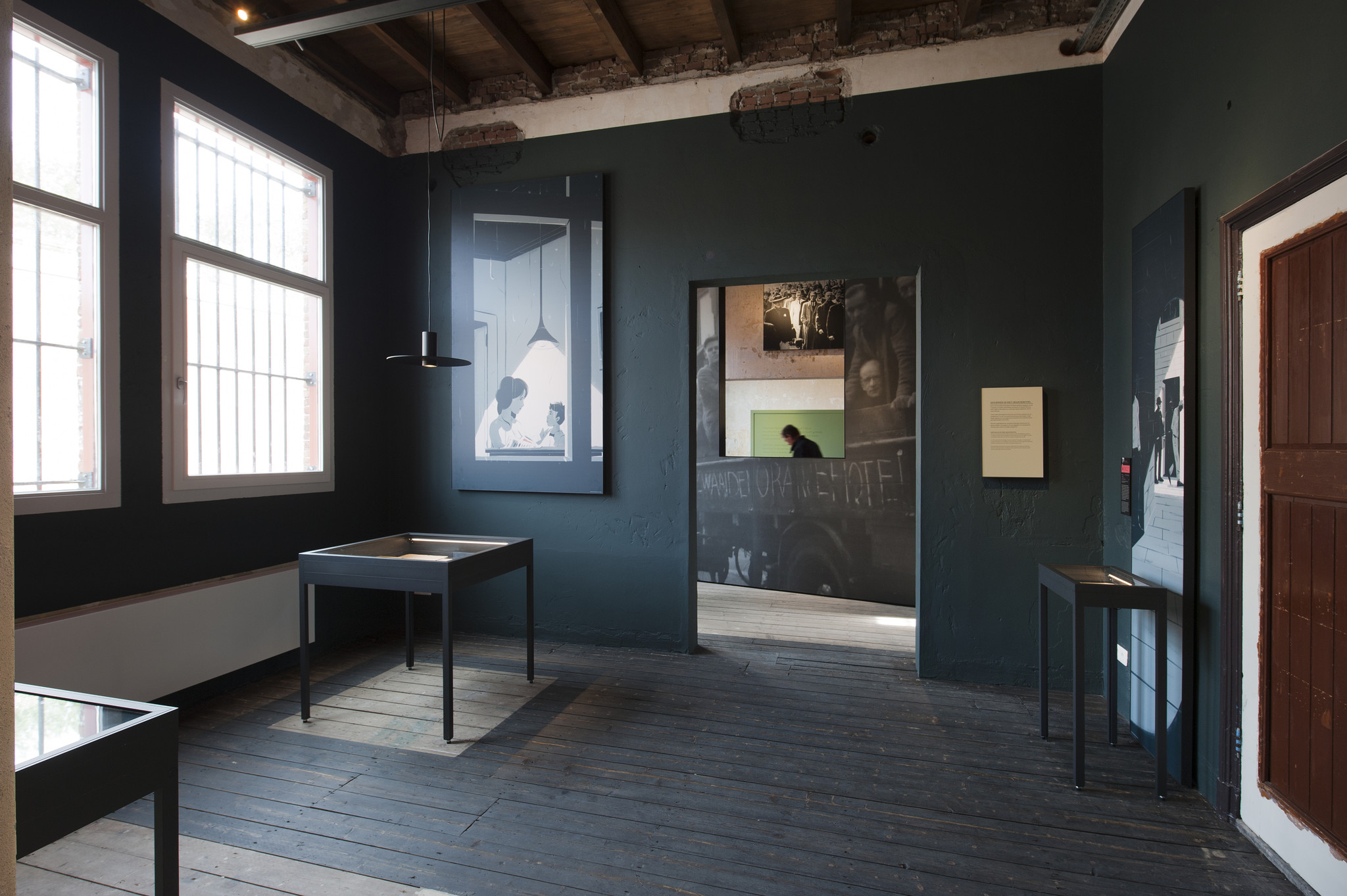Showcase Story 4 - The Oranje Hotel
Scheveningen, January 21, 1942. It is dark outside. The door of cell 577 in the Scheveningen prison opens, and Titus Brandsma is ushered in by the German police. The professor and priest had been urging Catholic newspaper editors to resist the publication of NSB (Dutch Nazi Party) advertisements. The sound of the cell door slamming shut echoes for seconds. In this "room" of the "Oranjehotel," as the prison is nicknamed, darkness descends.
The next day, Brandsma is interrogated. The Germans want to know why the Dutch hate the NSB, and they ask him to write an article on the subject. He complies. In his cell, he writes "The Last Writing," which is published during the war.
A few weeks after Brandsma puts his thoughts on paper, the born Frisian is transported. He goes through Camp Amersfoort and the prison in Kleve before ending up in the German concentration camp of Dachau. There, on July 26, 1942, the 61-year-old Brandsma meets his death.

25,000 Prisoners
Brandsma was one of the 25,000 prisoners held in Scheveningen between 1940 and 1945. Jews, Jehovah's Witnesses, Roma, Sinti, Communists, and especially members of the resistance ended up in German prisons or camps via the Oranjehotel. About 250 prisoners never made it out. They were sentenced to death and executed in the dunes of the Waalsdorpervlakte. After the war, the house of detention continued to serve: first for imprisoned Germans and NSB members, and later as a regular prison.
Museum Transformation by KEEN
In 1946, a group of former prisoners established the Committee Oranjehotel and created the Oranjehotel Monument: a memorial site consisting of, among other things, "Death Cell 601," the gate to the Waalsdorpervlakte, and the "Death Books." To manage this monument, the Oranjehotel Foundation was established. After the closure of the prison in 2009, the foundation fought for the preservation of the building. Stories like Brandsma's must never be lost, as they demonstrate the vulnerability of freedom.
"However, it was slated for demolition," says Herman van Eldik of the Hague-based design agency KEEN Blikverruimers. "The foundation, now consisting of descendants, took a strong stand against it. With success, as they ultimately achieved their ultimate goal: the restoration of the entire Oranjehotel and its transformation into a museum. The building is now a national monument, making it impossible to demolish."
"Our goal was to create something that would leave visitors in awe"
"Showing how it really was" Herman was tasked with designing the interior, incorporating a storyline. "Our goal was to create something that would leave visitors in awe," he explains. "Especially by showing how it truly was at that time. We achieve this through the stories of prisoners and their descendants, as well as information about the legal system of that era. We also use the color red frequently as a symbol of guilt and the blood that stains the building." At the exit, there is a guestbook. The messages left by visitors are often brief, such as "impressive" or "this must never happen again." Herman says, "So yes, I think we have achieved our goal."
Exclusive SDB Profiles
The restoration was a collaboration between contractor Heymans and KEEN (Maarten Stolk and Herman). They also made use of the expertise of SDB Vitrinebouw. "Together, we designed, developed, and built all the showcases," explains Herman. "In addition, SDB exclusively developed a profile system for the Oranjehotel, which allows us to easily insert panels or glass. Moreover, this system ensures unity in the design, which was perhaps our biggest challenge."
"SDB has exclusively developed a profile system for the Oranjehotel."
Now, nearly three years after the museum's opening, Herman looks back on the collaboration with SDB with satisfaction. He appreciates the excellent end result and the way it was achieved. "They truly collaborate," he says. "They are also flexible and manage to meet seemingly impossible deadlines. What was most remarkable about this project? That we were able to start from the initial concept. I also mention the collaboration with the Oranjehotel Foundation. Its members have an emotional connection, which has added even more value to our museum experience."

Behind every object in a showcase lies a remarkable story. The showpiece has earned its place behind the glass for a reason. We tell these historical, thrilling, and captivating stories in the Showcase Story section.
Do you have a Showcase Story worth savoring? Let us know at [email protected]









